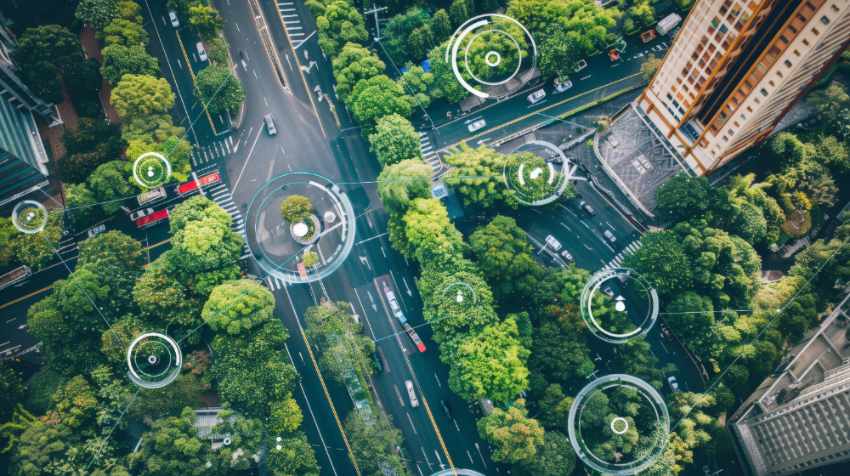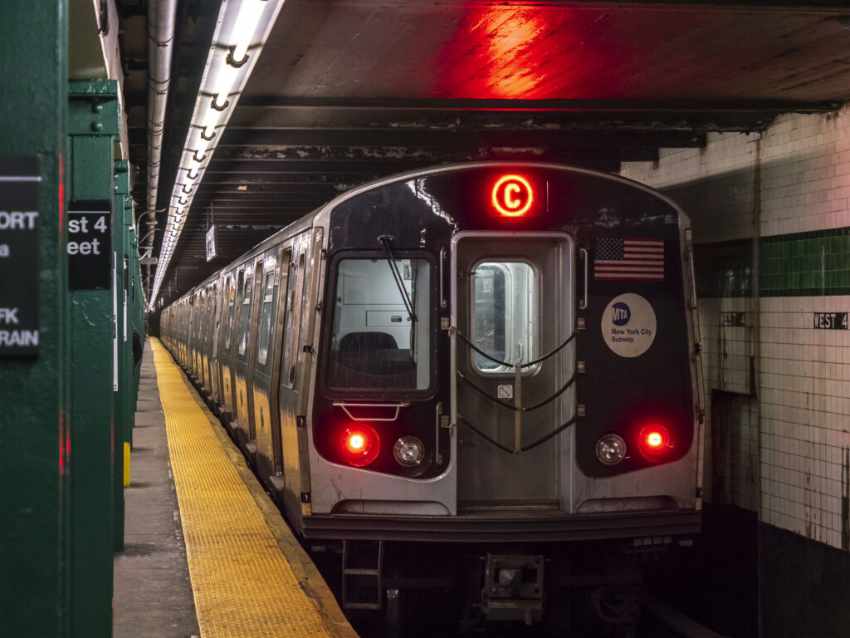By taking advantage of information technology and innovation, modern cities can optimize their day-to-day management, become more efficient, and improve many aspects of our daily lives. They are constantly improving themselves, the operation of infrastructure, energy, and transportation systems, and providing a safer and more convenient environment for residents.
According to the Smart City Index 2024, Zurich, Oslo, and Canberra have been ranked among the world’s most intelligent cities, demonstrating high standards of innovative technologies and sustainable development. But no smart city can do without high-quality and reliable machine learning. So, let’s dive into smart cities and the importance of data annotation!
The concept of a smart city
This is a technological approach to developing urban services and infrastructure based on integrating AI models. Depending on the level of needs and the type of tasks, these models may differ in their structure and thinking. The main goal of smart cities is to create a comfortable, safe, and convenient living environment by implementing innovative solutions in various areas of urban life.
This technology has come a long way, evolving from simple automation systems, such as basic sensors for traffic control, to complex integrated systems that use AI, the Internet of Things (IoT), and big data.
Smart cities are becoming a global trend in modern urbanism, and every year, more cities worldwide implement unique technologies to be the “best” everywhere. From Singapore to Barcelona, many megacities have already become, so to speak, “laboratories” for testing smart, innovative technologies.

Smart solutions begin with precise annotation
According to Forbes, more than two-thirds of the world’s population will live in cities by 2050. This significant demographic shift presents both a challenge and an opportunity for cities to develop technology and make their cities smarter. To meet this challenge, stakeholders increasingly turn to advanced technologies such as AI and generative AI to revolutionize how cities are designed, built, and managed to serve their ever-growing populations better.
Data annotation plays a key role here; it involves labeling and tagging individual training data elements, such as text, images, audio, or video, to help machines understand the world. Companies like Keymakr use advanced tools to create high-quality and efficient training datasets, which emphasizes its essential contribution to the development of modern cities.
Innovative technologies being implemented in modern cities
Integration of IoT devices with AI-based traffic management systems. One of the most promising smart city technologies is the integration of IoT devices with AI-based traffic management systems. AI-trained algorithms analyze real-time traffic data and coordinate traffic signals, which can significantly reduce congestion, optimize transit efficiency, and reduce greenhouse gas emissions. This improvement positively impacts citizens’ daily lives and travel.
In Istanbul, Turkey, the Ministry of Transportation implemented an AI-based traffic management system to prevent accidents caused by overheight trucks at tunnel entrances and toll booths. This system utilizes smart cameras and sensors to detect vehicles exceeding height restrictions, alerting drivers in real-time to prevent collisions. As a result, the number of such accidents has decreased from one or two per month to zero incidents over a year.
Autonomous vehicles. AVs improve traffic efficiency, reduce congestion, and enhance safety. It can communicate with infrastructure, such as traffic lights and sensors, to optimize traffic flow and minimize delays. For example, in Singapore, autonomous shuttles are being tested to provide last-mile connectivity, reducing the need for private cars and lowering urban emissions. In July 2024, WeRide launched its autonomous Robobus shuttle service at Sentosa. This service marked Singapore’s first publicly accessible Level 4 autonomous Robobus route, covering a 1.2 km loop with four stops. The Robobus is a micro-transit solution providing efficient and sustainable transportation for hotel guests and tourists.
Keymakr worked with a leading AV software developer to address the challenges of improving safety and reliability in complex real-world environments. The collaboration focused on annotating edge case data, such as unpredictable pedestrian movements, abrupt lane changes by vehicles, and navigation in extreme weather conditions like fog, snow, and heavy rain. The team synchronized multi-sensor data from cameras, LiDAR, and radar. It gave comprehensive and precise labeling across all inputs.
Energy monitoring and testing. This technology is already implemented in many cities. An AI algorithm checks electricity use compared to the user’s needs and can adjust electricity costs automatically. It aims to reduce energy costs and make electricity bills more affordable.
Many of the features of such an innovative and integrated energy infrastructure are currently being scaled up in Malmö. By 2030, the town aims to run on 100% renewable and recycled energy.

Buildings and Homes. Smart home systems use AI-driven automation to optimize heating, cooling, and lighting based on occupancy patterns, reducing energy consumption. In commercial buildings, AI-powered predictive maintenance detects equipment failures before they occur, minimizing downtime and repair costs.
Bo01, known as the “City of Tomorrow,” is a sustainable urban development in Malmö, Sweden, designed to operate entirely on renewable energy. The district utilizes wind power, solar panels, and an innovative aquifer thermal energy storage system to meet its heating and cooling needs. This system extracts heat and cold from underground reservoirs and seawater, storing energy seasonally to ensure efficient temperature regulation throughout the year.
Water Management. AI-driven predictive analytics help utilities optimize water distribution by analyzing consumption patterns, weather forecasts, and infrastructure conditions.
In collaboration with FIDO Tech Ltd., Oldcastle Infrastructure has developed the Hydro-Logic CivilSense system, an AI-driven solution for efficient water management. By mapping water infrastructure and installing strategically placed sensors, the system analyzes data to predict and detect leaks within the network with 93% accuracy. This proactive approach enables timely maintenance, reduces water loss, and enhances the sustainability of water distribution systems.
Social Infrastructure. In urban areas, AI-powered surveillance systems monitor public spaces, enhancing security and enabling quicker responses to emergencies, such as detecting incidents in real-time. Intelligent traffic systems, driven by AI, help manage congestion, optimize transit schedules, and reduce pollution, making cities more efficient and livable.
London has significantly expanded its CCTV network by integrating AI-powered monitoring to address rising crime rates and antisocial behavior. Local councils, such as Hammersmith and Fulham, operate thousands of cameras equipped with advanced surveillance technologies, enabling rapid identification of potential threats and criminal activities.
Cybersecurity, privacy, and implementation challenges in smart cities
Smart cities promise significant improvements in the management of urban processes, but several challenges accompany their implementation:
- Implementation and maintenance costs: Integrating technology into urban infrastructure requires significant financial investment. For example, the New York Metropolitan Transportation Authority (MTA) has initiated a program to use Google Pixel smartphones equipped with AI to monitor subway tracks, identifying maintenance needs in advance and reducing delays. Last year, Google Public Sector, which partners with government agencies, installed Pixel smartphones across trains that could use AI to detect the need for track maintenance. The idea is to find defects in the subway system before they worsen enough to cause delays. As part of a TrackInspect prototype, Google Public Sector installed Pixel smartphones on trains along the A-line last year.

- Data privacy: The collection and analysis of large amounts of personal data raises concerns about its use and protection. In 2024, Amsterdam decided to suspend the implementation of its innovative traffic light system, which was designed to optimize traffic flow using GPS and mobile applications to track vehicles.
Future trends in the development of smart cities
According to forecasts, the global smart city industry is expected to reach a projected revenue of USD 3728.3 billion by 2030 and grow at a CAGR of 25.8% from 2024 to 2030.
Future investments in smart cities focus on enhancing urban living through technological advancements and sustainable infrastructure. To improve mobility and reduce congestion, significant funding will be directed towards developing intelligent transportation systems, such as high-speed rail and Bus Rapid Transit (BRT). Additionally, integrating 5G technology will facilitate the interconnection of numerous IoT devices, optimizing urban services like traffic management and energy consumption. Substantial investments are also planned for renewable energy projects and smart grids to promote environmental sustainability and efficient resource use.
Innovative city initiatives are shifting towards prioritizing residents’ needs and experiences, emphasizing participatory planning and open data access. AI and IoT are becoming more deeply integrated, enabling real-time data analysis and automated decision-making for improved urban management. Smart cities increasingly prioritize sustainable solutions, reducing carbon emissions, promoting renewable energy, and enhancing resilience to climate change.
Cities are utilizing digital twin technology to create virtual replicas of urban environments, allowing for simulations and predictive modeling to optimize infrastructure and services. With the growing reliance on data, smart cities are placing a stronger emphasis on robust cybersecurity measures and ensuring the protection of citizen data.


